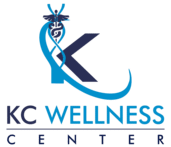Only about one in five adults and teens get enough exercise to maintain good health, according to The American Heart Association (AHA). Reasons range from tiredness to lack of time, but it’s crucial to establish a fitness routine that works for you to improve your overall health. Science links inactivity and a sedentary lifestyle to a higher risk of heart disease, Type 2 diabetes, colon and lung cancers, and early death. With heart disease being the leading cause of death in the United States per the CDC, cardiovascular health is not something to ignore.
Cardiovascular activity refers to any activity that gets your blood pumping and large muscle groups working. The AHA recommends getting at least 150 minutes of moderate aerobic exercise or 75 minutes of vigorous activity each week. This includes brisk walking, swimming, tennis, biking, gardening, dancing and more. It’s clear that being more active benefits everyone and helps us live longer healthier lives. According to the AHA, the most significant benefits include:
- Better sleep, including improvements in insomnia and obstructive sleep apnea.
- Improved cognition, including memory, attention and processing speed.
- Less weight gain, obesity and related chronic health conditions.
- Better bone health and balance, with less risk of injury from falls.
- Fewer symptoms of depression and anxiety.
- Better quality of life and sense of overall well-being.
Heart rate training is one effective strategy used to optimize your aerobic exercise by working out at a specific effort level for a set amount of time to achieve peak performance.
What is Heart Rate Training?
Heart rate training aims to use your heart rate range to determine your effort while performing an exercise. Your effort level is what determines your gains from the workout. Therefore, measuring the level of effort being put forth by your body will allow you to adjust where necessary to see peak results.
The main idea is to train your aerobic system without overstressing your skeletal and muscular systems to lead to more sustainable results over time. It helps improve your VO2 max or the maximum amount of oxygen you can use during a workout, the number one determinant of your aerobic endurance and overall health.
The heart rate range typically represents a percentage of your maximum heart rate or the greatest number of times your heart can beat per minute. The higher the heart rate, the greater the intensity of the workout. This method is most useful for exercises or activities performed for at least 20 minutes, such as biking or running. It is less helpful for interval training and strength training due to the shorter exertion times and the start-and-stop nature.
Below is a chart that can be useful for matching effort level with heart rate, workout type and duration.
| Workout Type | Main Goal(s) | Heart Rate Range | How Workout Should Feel | Workout Duration |
| Low intensity /recovery |
|
Below 60% of maximum heart rate |
|
20 minutes+ |
| Easy |
|
60 to 70% of maximum heart rate |
|
20 minutes+ |
| Medium Effort/Steady State |
|
70 to 80% of maximum heart rate |
|
20 to 90 minutes |
| Tempo Workout |
|
80 to 90% of maximum heart rate |
|
|
| Aerobic Intervals |
|
90 to 95% of maximum heart rate |
|
|
Why It Works
- It’s personal: There isn’t a one-size-fits-all approach to fitness. Sometimes we tend to focus on what others are doing and what we may not be doing ourselves, which may not be conducive to what our bodies need. Finding the routine and specific exercises that work best for you will produce the best results.
- It’s safe: Heart rate training can help you from overtraining and putting too much strain on your body. It serves as a gauge for times to pick it up and slow it down. Recovery is a time when it is necessary to slow it down. By resting, you are lowering the risk of fatigue and will perform better during the more intense activity when it is time.
- It’s trackable: By measuring heart rate, you can gather data that will help you improve where and when you need to. It is a better metric for evaluating your fitness level than a scale. It can also help determine when the body is burning fat versus carbohydrates and help us get closer to oxidizing fat for energy.
How to Get Started
First, you need to identify your resting heart rate or the beats per minute at rest or before any physical activity. The standard baseline for adults falls between 60 and 100 beats per minute. Next, it’s essential to become familiar with the five different zones. Each zone represents a percentage of your maximum heart rate (MHR). You can calculate your MHR by subtracting your age from 220. Keep in mind that these zones will vary from person to person based on their goals and capabilities.
By defining your zones, you can better capitalize on aerobic training and regulate intensity based on personal goals, such as fat loss or peak performance. A training plan created by a trainer or medical professional can help you determine the amount of time you will spend in each zone to meet your specific goals. The five zones include:
- Zone 1 – Recovery/Easy (55-65% of MHR): This is a very comfortable effort used for warm-ups and cool-downs.
- Zone 2 – Aerobic/Base (65-75% of MHR): The bulk of the training occurs in this zone; this relaxed effort allows you to hold a conversation.
- Zone 3 – Tempo (75-85% of MHR): This is a comfortably hard effort during which you can only speak in short, broken sentences.
- Zone 4 – Lactate Threshold (85-90% of MHR): Training in this zone helps your body develop efficiency when you’re operating at your maximum sustainable pace.
- Zone 5 – Anaerobic (90-100% of MHR): Often a 5K pace, this is a sustainable, challenging effort but only lets you speak a few words at a time.
Make sure to test out what it feels like to be in each zone. Find the exercise that allows you to participate for 30 minutes without fatigue or exhaustion. If your heart rate is too high during the training, it will be unsustainable and won’t move you any closer to your goals.
Wearable Technology
We have more access to data regarding our health at our fingertips than ever before. You can record and study these statistics daily through wearable technology. Like your fitness routine, the right tracker will vary based on your goals and lifestyle. Wired compiled a comprehensive list of the best fitness trackers in 2022. Here are a few of the top performers:
- Best all-around: The Fitbit Charge 5 ranks at the top of their list for its attractiveness, affordability, accessibility and ease of use. It includes additional sensors to provide insights through stress scans and electrocardiograms. It also connects to GPS, which is beneficial for tracking outdoor workouts.
- Best for running: The Coros Pace 2 offers a long-lasting battery charge and integrates with the Strava app for mapping runs and bike rides.
- Most wearable: Whoop makes various fitness super knit bands that are comfortable and discreet. They offer options besides just wrist trackers, including bicep bands, sports bras and leggings.
Resources in Kansas City
You don’t have to tackle cardiovascular health on your own. There are many ways you can get out and get moving right here in Kansas City.
- The YMCA of Greater Kansas City offers various group exercise classes focused on cardiovascular activity, including boot camp style classes, kickboxing, fast-paced step workouts and Zumba. There is no additional charge for these classes, which are included in your gym membership.
- Kansas City offers a plethora of running trails around the city. The Brush Creek Trail is the signature route in the Plaza area spanning five miles with a paved path. Take in the beauty of the city while getting your cardio workout in.
- If biking is more your speed, check out the six-mile Harry Wiggins Trolley Track Trail extending from the Country Club Plaza through Brookside and Waldo areas. There is no shortage of fountain views and places to stop for shopping, lunch or afternoon fun.
- Read our quick and easy guide to improving heart health for more ways to improve your cardiovascular system, including nutrition and other healthy habits.
At KC Wellness Center, we want to help you take care of your body and improve your health. We offer medical weight loss programs that include lifestyle changes for fast, safe and sustainable results. The initial phase of our weight-loss programs consists of medications, supplements and meal plans customized to fit your needs and goals. To learn more about how we can help you in your weight loss journey, call us at 816-214-5276 or contact us here.

Dr. Rahul Kapur, M.D. is a board-certified family medicine physician with a dedicated passion for integrative medicine and a deep knowledge of functional medicine. He was named intern of the year at Wesley Medical Center in Wichita, KS, and has been practicing as a hospitalist for over a decade. He has successfully helped many patients in Kansas City with his specialized IV bags, ketamine therapy, hormone optimization and weight loss therapy methods.

